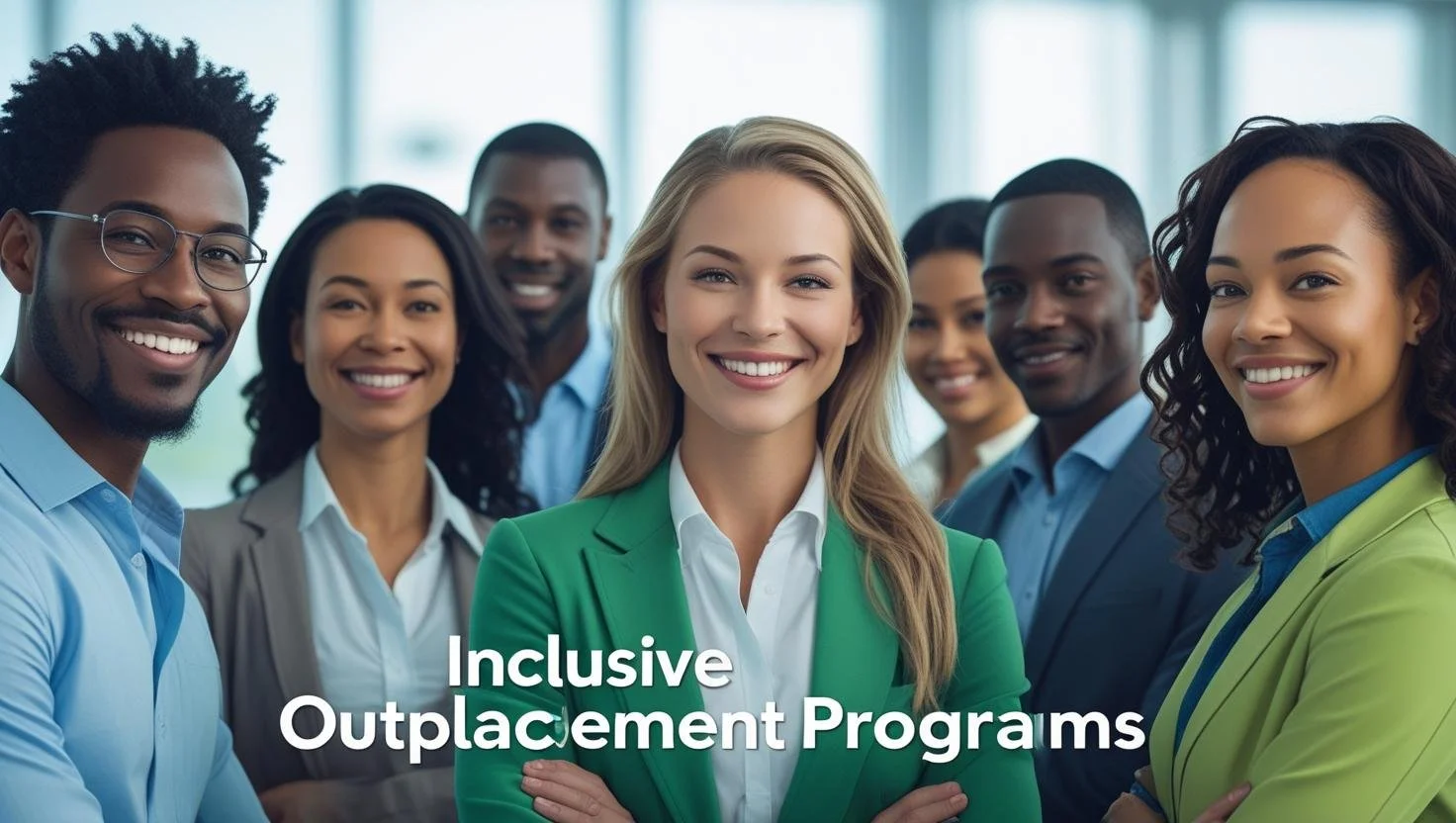Inclusive Outplacement Programs: Supporting Every Employee with Equity and Respect
When layoffs or workforce transitions occur, companies often focus on logistics—paperwork, timelines, exit interviews. But in today’s workplace, that’s no longer enough. Employees expect more. More transparency. More empathy. More equity. That’s where inclusive outplacement programs come in—and why they’re becoming essential for forward-thinking HR teams.
Let’s explore what makes an outplacement program inclusive, why it matters for your people and brand, and how to design one that reflects your values while truly supporting every employee through change.
What Does “Inclusive Outplacement” Really Mean?
At its core, inclusive outplacement is about ensuring that every impacted employee—regardless of role, background, ability, or access—receives personalized, respectful support during their job transition.
That means moving beyond cookie-cutter solutions and considering:
Language and literacy accessibility
Tech comfort and internet access
Cultural and generational differences
Disability accommodations
Equity in program delivery across departments and levels
It’s not about offering more. It’s about making sure the support you do offer actually works for the wide range of people who need it.
Key takeaway:
Inclusive outplacement ensures that no one is left behind or underserved in the transition process—no matter their background or role.
Why Inclusion Matters During Layoffs
Laying off employees is hard—on them, on managers, and on your brand. But it’s also one of the biggest moments where your company’s values are visible. How you handle exits says a lot about who you are.
An inclusive outplacement approach helps you:
Demonstrate respect and equity in how every employee is treated
Reduce legal risk by showing consistent and fair application of support
Preserve trust among remaining employees, who are watching closely
Protect employer brand reputation, especially in public-facing industries
Uphold DEI commitments through real, actionable follow-through
In fact, according to Deloitte’s Human Capital Trends report, nearly 80% of executives say belonging and inclusion are key to their organization’s success—yet only 13% believe they’re ready to deliver on it during layoffs or restructures (source).
What Makes an Outplacement Program Inclusive?
There’s no one perfect model, but the most inclusive programs tend to:
Offer virtual and mobile-friendly platforms that are simple to use
Provide multiple coaching formats (1-on-1, group, chat, or self-paced)
Include AI tools that personalize the experience without bias
Use accessible language and design, especially in materials and resumes
Ensure consistent support for frontline, hourly, and salaried workers alike
At TurboTransitions, we’re especially focused on that last point. We believe that hourly workers, front-line staff, and knowledge workers all deserve support tailored to their needs—not just executives.
That’s why we offer a flexible, tech-enabled outplacement model that includes access to PruE AI—an AI-powered career coaching platform with 10 personalized tools like a Resume Builder, Skills Gap Identifier, and LinkedIn Optimizer. These tools are available 24/7, making them more accessible for users with nontraditional schedules or limited one-on-one time.
Real-World Example: Supporting a Diverse Frontline Team
One employer we worked with had to downsize multiple departments—ranging from warehouse staff to IT leads. Rather than offering a blanket approach, we worked with their HR team to:
Offer materials in both English and Spanish
Use mobile-first access points for employees without personal laptops
Set up quick-start resume templates for less digitally savvy employees
Pair laid-off staff with human coaches based on industry and goals
The result? Their HR director shared that the team received more positive employee feedback during this reduction than any prior workforce change. That’s the power of thinking inclusively—even when letting people go.
Frequently Asked Questions About Inclusive Outplacement
How is inclusive outplacement different from traditional outplacement?
Traditional outplacement tends to be one-size-fits-all. Inclusive outplacement tailors support to different employee needs, learning styles, access levels, and backgrounds.
Do inclusive programs cost more?
Not necessarily. Many inclusive elements—like mobile access, multilingual content, or AI-powered coaching—are now built into affordable virtual platforms like those used by TurboTransitions.
What’s the ROI of investing in inclusive outplacement?
It improves reemployment outcomes, strengthens your employer brand, reduces legal risk, and helps maintain morale among remaining employees—all of which have long-term value.
What if employees don’t use the services?
Uptake can be improved with good communication and inclusive onboarding. Simple, accessible platforms like PruE.ai often have higher engagement because they’re easy to navigate and available anytime.
Are hourly and front-line employees typically included?
They should be—but many aren’t. A key benefit of inclusive programs is making sure those who need support the most are actually getting it.
Wrapping Up
Inclusive outplacement programs are no longer a nice-to-have. They’re a business imperative if you want to treat your employees with dignity and demonstrate that your DEI values don’t stop when times get tough.
If you’re looking for an affordable, scalable way to deliver equitable support to every departing employee—no matter their background—consider a virtual-first solution like TurboTransitions that builds inclusion into the core of its design.
Because when every employee matters, every transition should too.
Tags: inclusive outplacement programs
Author: Reid Alexander
Disclaimer: This content is for informational purposes only & not intended as professional legal or HR advice. Consult with qualified professionals for advice tailored to your specific situation. The author & publisher disclaim any liability for errors, omissions, or actions taken based on this content.


